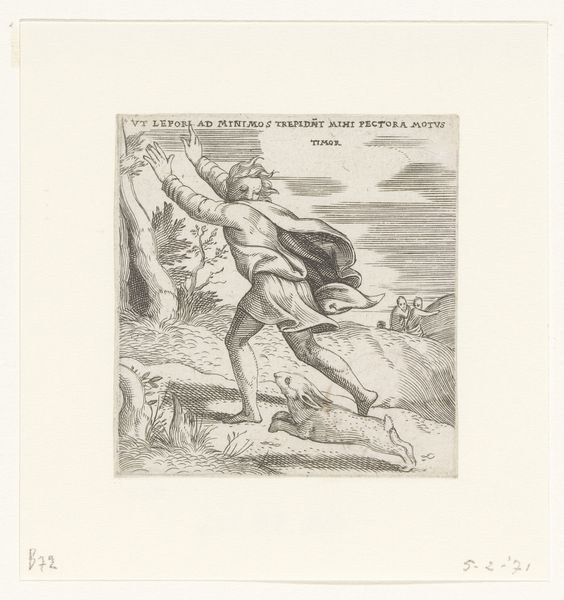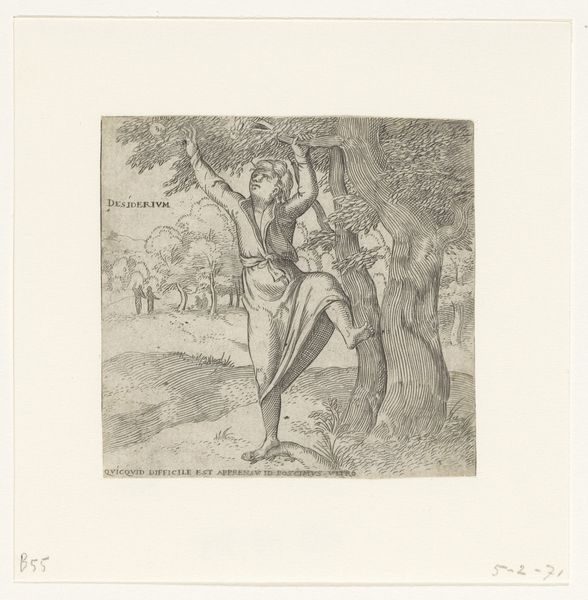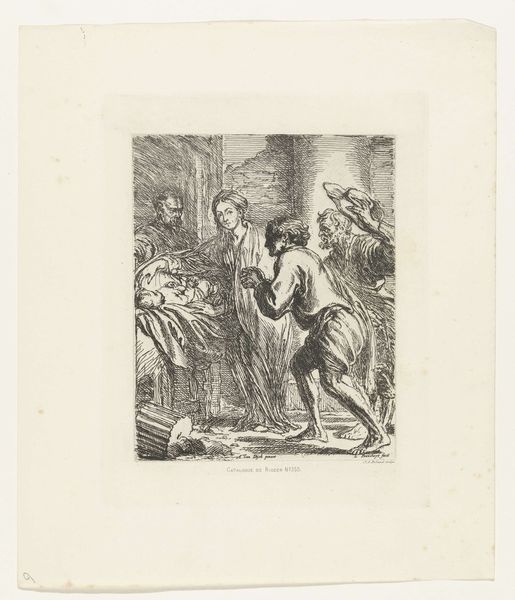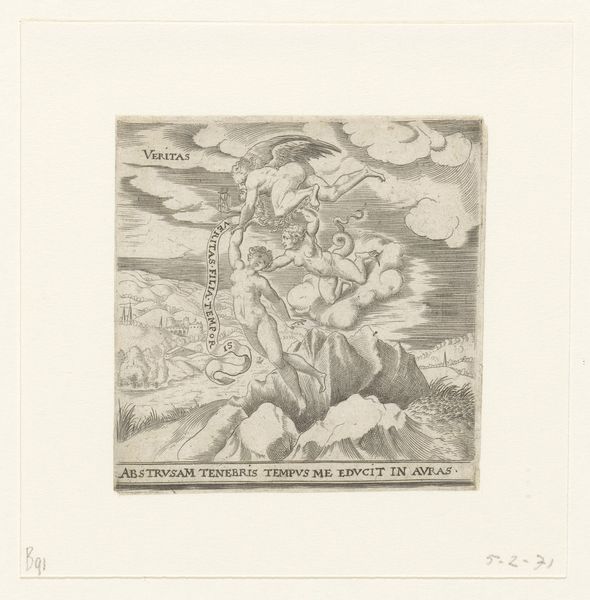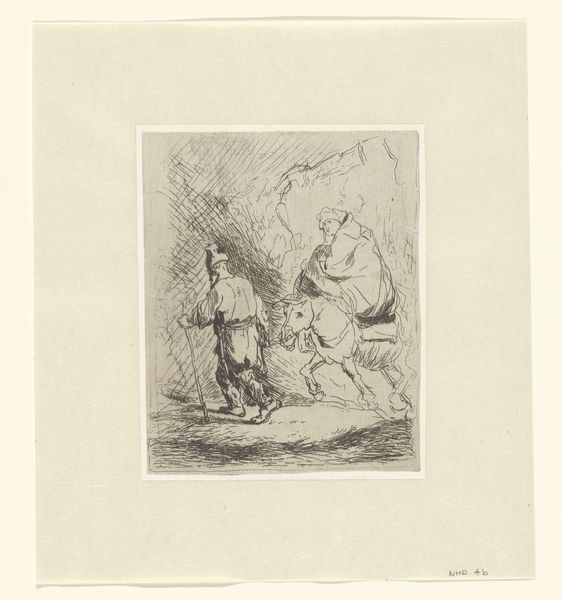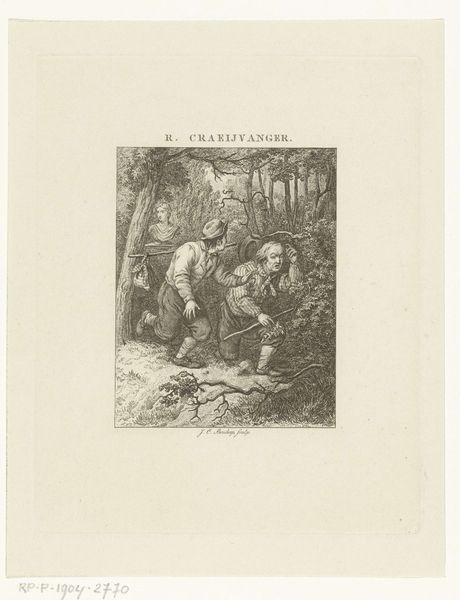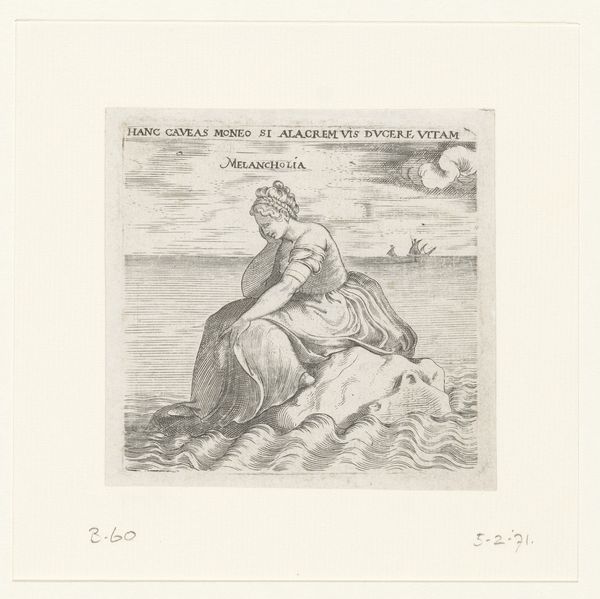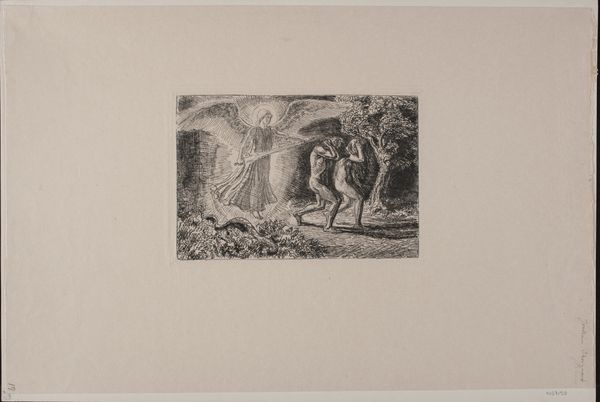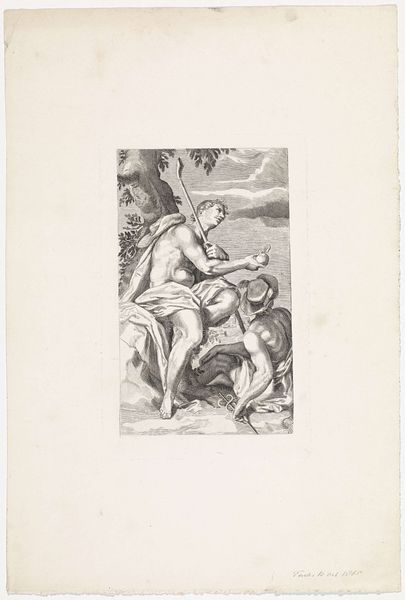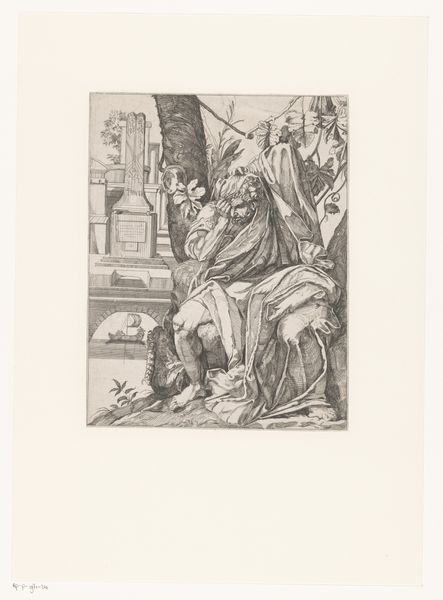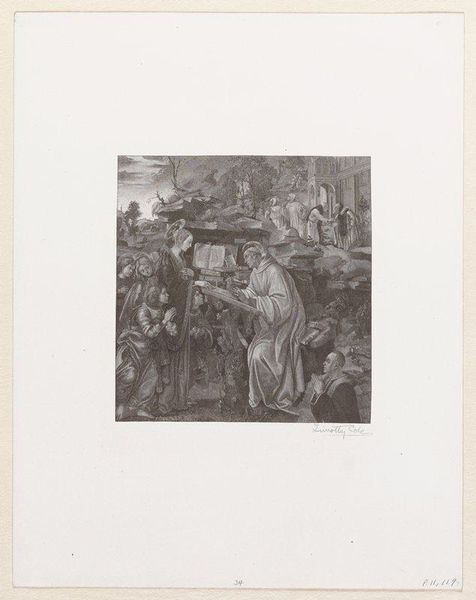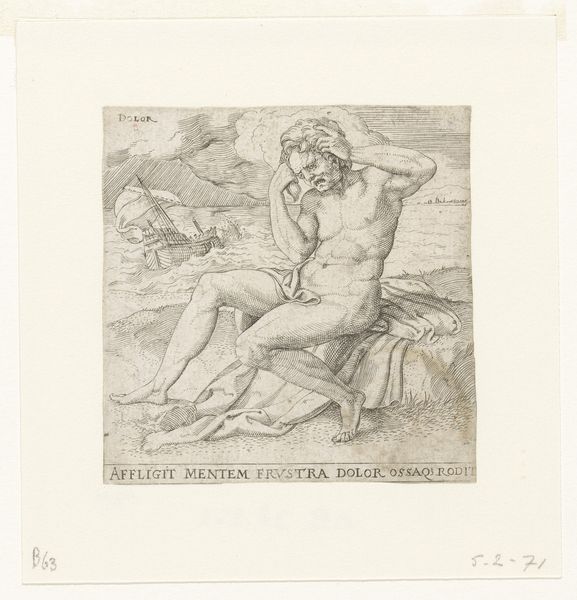
print, engraving
#
allegory
# print
#
old engraving style
#
mannerism
#
history-painting
#
nude
#
engraving
Dimensions: height 78 mm, width 83 mm
Copyright: Rijks Museum: Open Domain
Curator: Here we have "Onheil," or "Calamity," an engraving by Enea Vico, made sometime between 1533 and 1567. The work resides here at the Rijksmuseum. What's your immediate impression of it? Editor: The starkness really strikes me. The desolate figure, the bare landscape, all rendered in sharp lines—it conveys a deep sense of loss and vulnerability. It’s all exposed. Curator: I'm particularly drawn to the meticulous process of engraving. Look at how Vico uses line weight and density to create form and texture. The level of skill to produce this image mechanically with metal tools is fascinating. And think about the labor involved to replicate such detail to create copies. Editor: Absolutely. And when we look closer, it’s hard to miss the socio-political context implied. This figure, stripped of clothing and shelter—"Vestitus et tectis spoliata heu nuda relinquor"—left naked, as the inscription says. I mean, who is represented by that figure? What hierarchies of power are at play to leave someone so vulnerable, and who benefits? Curator: Good points. Considering it was the Mannerist style that prevailed then, with the exaggerations and artificiality so common in artistic expression, Vico's mastery of materials becomes even more important. You feel that human labor that is present in the physical impression. Editor: Agreed, but think of it through the lens of social suffering—a very real historical experience. Disasters, plagues, societal upheavals; all creating masses of vulnerable people left outside of the protection and privileges afforded only to certain groups. To understand its meaning, we must look to its historical context. What class of patron was involved? And where did it circulate, and to what end? Curator: It makes one consider how this object would have functioned and circulated through different social classes in Vico's own era. I find that utterly remarkable, but also a little bit depressing! Editor: Precisely. Art shouldn't shy away from revealing power structures and highlighting injustice, even, or perhaps especially, when elegantly rendered. It also helps to see just how little some things change.
Comments
No comments
Be the first to comment and join the conversation on the ultimate creative platform.

